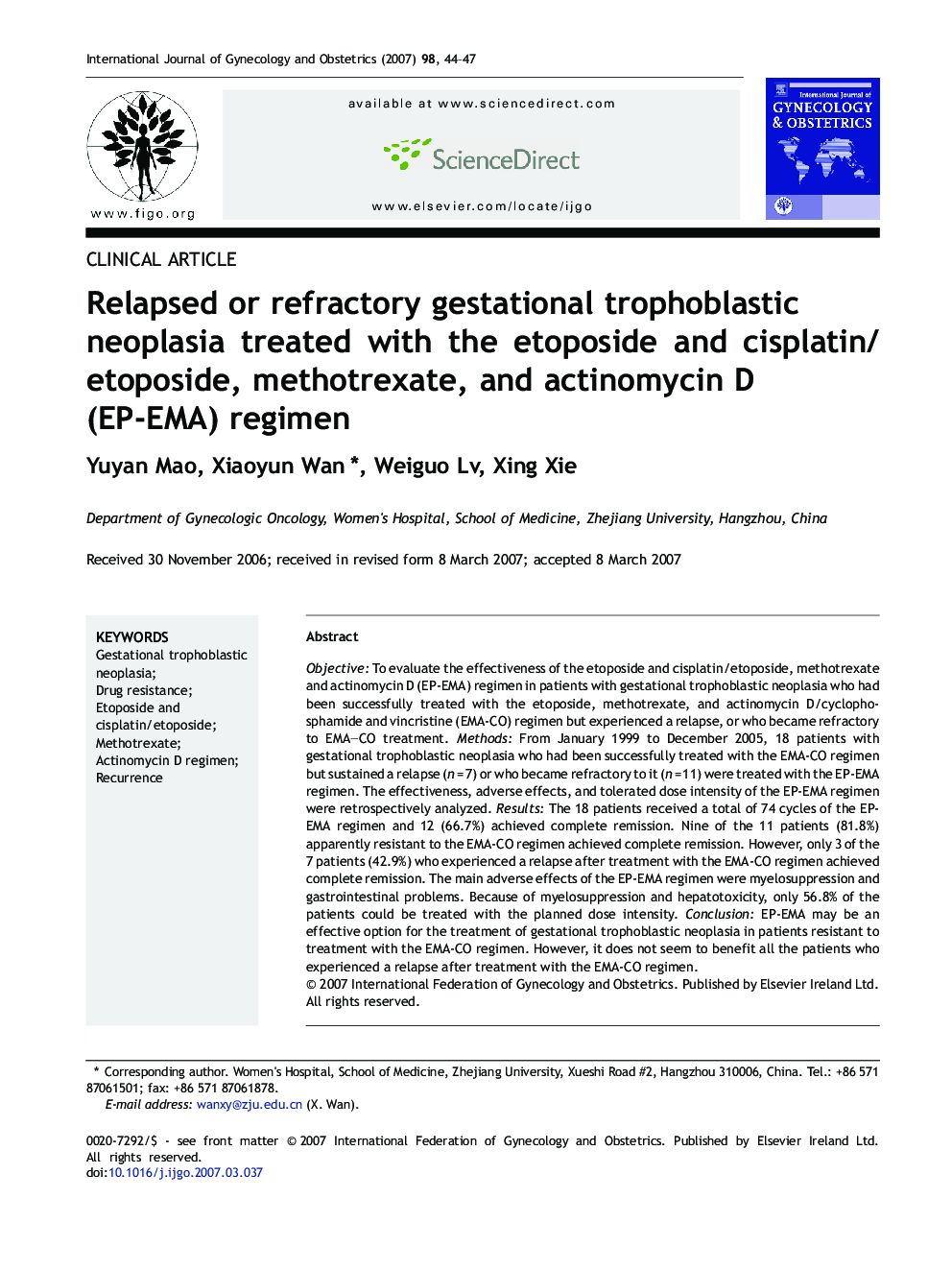| Article ID | Journal | Published Year | Pages | File Type |
|---|---|---|---|---|
| 3952947 | International Journal of Gynecology & Obstetrics | 2007 | 4 Pages |
ObjectiveTo evaluate the effectiveness of the etoposide and cisplatin/etoposide, methotrexate and actinomycin D (EP-EMA) regimen in patients with gestational trophoblastic neoplasia who had been successfully treated with the etoposide, methotrexate, and actinomycin D/cyclophosphamide and vincristine (EMA-CO) regimen but experienced a relapse, or who became refractory to EMA−CO treatment.MethodsFrom January 1999 to December 2005, 18 patients with gestational trophoblastic neoplasia who had been successfully treated with the EMA-CO regimen but sustained a relapse (n = 7) or who became refractory to it (n = 11) were treated with the EP-EMA regimen. The effectiveness, adverse effects, and tolerated dose intensity of the EP-EMA regimen were retrospectively analyzed.ResultsThe 18 patients received a total of 74 cycles of the EP-EMA regimen and 12 (66.7%) achieved complete remission. Nine of the 11 patients (81.8%) apparently resistant to the EMA-CO regimen achieved complete remission. However, only 3 of the 7 patients (42.9%) who experienced a relapse after treatment with the EMA-CO regimen achieved complete remission. The main adverse effects of the EP-EMA regimen were myelosuppression and gastrointestinal problems. Because of myelosuppression and hepatotoxicity, only 56.8% of the patients could be treated with the planned dose intensity.ConclusionEP-EMA may be an effective option for the treatment of gestational trophoblastic neoplasia in patients resistant to treatment with the EMA-CO regimen. However, it does not seem to benefit all the patients who experienced a relapse after treatment with the EMA-CO regimen.
